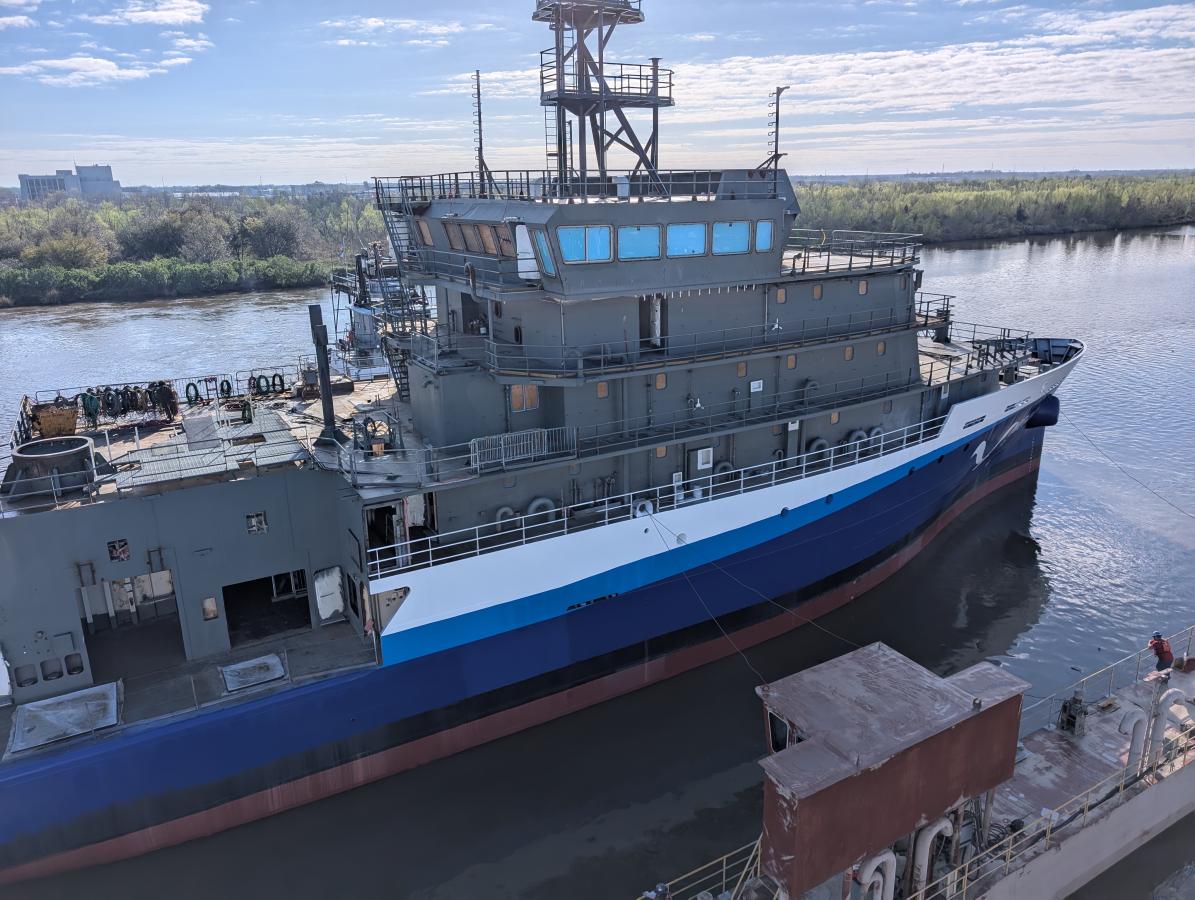
Two new oceanographic-class research ships, part of NOAA’s plan to modernize its research fleet, have reached a key construction milestone.
In March, Discoverer was launched in Houma, Louisiana, at Thoma-Sea Marine Constructors. The 244-foot (74-meter) ship, now 68% complete, will be homeported in Newport, Rhode Island, after its commissioning. It will support a wide variety of NOAA missions, to include exploring the deep sea, monitoring oceanographic conditions and studying marine life. Discoverer and its sister ship, Oceanographer, will incorporate the latest clean energy technologies, including vessel emission controls and high-efficiency diesel engines.
Oceanographer was floated in fall 2024, also at Thoma-Sea, and construction is 76% complete. Once commissioned into NOAA’s fleet, the ship will be homeported in Honolulu. These new ships will operate with a crew and scientists of as many as 48 people. Both ships are expected to be completed in 2026.
The U.S. Navy awarded a $178 million contract in 2020 to Thoma-Sea for the design and construction of this new class of NOAA vessels. The keel-laying for Discoverer was in October 2022.
The average age of NOAA’s 15-ship fleet is older than 30 years. By 2030, six of those ships will likely reach the end of their service life — the operational period of a ship. These new state-of-the-art ships will ensure NOAA can continue to meet its mission to support safe navigation, coastal resource management and the nation’s economy.
Two additional charting and mapping vessels, Surveyor and Navigator, are also being designed and built for NOAA.
NOAA’s fleet of research and survey ships is operated, managed and maintained by the agency’s Office of Marine and Aviation Operations. The ships are crewed by NOAA Corps officers and civilian professional mariners.

